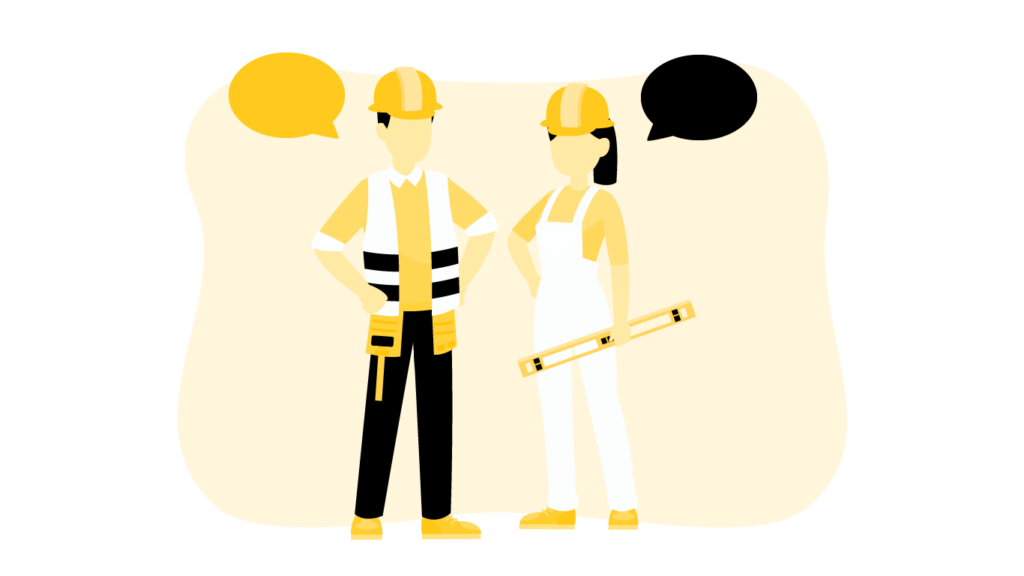3-Way Communication: How to Keep Your Workplace Safe

When it comes to workplace safety, communication is key. 3-way communication, also known as “active listening,” is a process that allows all parties involved in a conversation to share information and understand one another clearly.
This type of communication is essential in the workplace, where misunderstandings can lead to dangerous situations. 3-way communication can help prevent accidents by ensuring everyone is on the same page and knows what to expect.
According to the National Safety Council, three-way communication is essential to maintaining a safe workplace. Not only does it help prevent accidents, but it can also improve morale and increase efficiency.
3-way communication: safety is about talking it through.

Why is 3-Way Communication Important in the Workplace?
3-way communication is crucial because it allows for more accurate and timely communication between team members. In a 3-way conversation, team members can ask follow-up questions, give clarifications, and ensure everyone is on the same page.
This results in a more cohesive team and a better work product by avoiding ineffective communication.
3-way communication also allows for more accurate and timely communication between managers and employees. With it, managers can give precise instructions, provide feedback and clarification of issues, and ensure that employees understand what is expected.
This results in fewer misunderstandings and more effective collaborative communication.
Overall, 3-way communication is an essential component of effective communication and effective teamwork in the workplace.

OSHA Regulations For 3-Way Communication
OSHA has set specific communication regulations to ensure effective communication in the workplace.
These regulations ensure that all workers communicate effectively and that potential hazards can be identified and addressed quickly.
Some of the key regulations for effective communication include:
- Workers must be able to communicate with each other effectively to identify and address any potential hazards.
- Communication practices must be clear and concise so that everyone understands the message.
- The line of communication must be open and unrestricted so that workers can share information freely.
- Workers must be able to raise concerns and give feedback to improve safety in the workplace.
By following these regulations, employers can create a safe and effective 3-way communication system in the workplace. These communication factors ensure that all workers stay informed and aware of potential hazards and that you can quickly address any concerns.
3-Way Communication Hazards
Some of the hazards associated with 3-way communication include:
- Miscommunication – If team members cannot ask for clarification of issues or if they do not understand the message, dangerous misunderstandings can occur.
- Lack of clarity – For 3-way communication to deliver effective teamwork, all team members must be on the same page. If the message is not clear, or if it is misinterpreted, confusion and chaos can result.
- Unclear instructions – When managers give instructions to employees, they must be clear and concise. If the instructions are not understood, employees may not know what is expected of them, which can lead to accidents or injuries.
- Poor listening skills – Another hazard of 3-way communication is poor listening skills. If team members are not paying attention, they may miss important information or instructions, leading to dangerous mistakes or accidents.
- Rudeness or hostility – 3-way communication can also be hazardous if team members are rude or hostile towards one another. This can lead to tension and conflict and prevent workers from communicating effectively.
By understanding these hazards, employers can take steps to mitigate the risks associated with 3-way communication in the workplace.

3-Way Communication Toolbox Talk
A 3-way communication toolbox talk is a great way to ensure everyone is on the same page when communicating effectively.
How does three-way communication work?
Here’s how three-way communication works:
- The sender communicates his message to the recipient.
- Reciprocal acknowledgment of the communication is made by the receiver repeating all relevant information to the sender. The receiver must ask the sender if they understand the communication.
- The sender must confirm that the receiver understood the message. If it isn’t understood, the sender should indicate that it is not understood, and the three-way communication process needs to begin.
You can repeat this process until everyone knows what is being said. 3-way communication is an effective way to prevent misunderstandings and keep workplaces safe.
Questions to Employees
- What is 3-way communication?
- How can 3-way communication be used to resolve disagreements?
- What are some of the common illnesses or injuries related to 3-way communication?
- What should you do if you feel overwhelmed or stressed during a 3-way communication conversation?
Promote 3-Way Communication with this Email Template
Hi [Employee Name],
I’m always looking for ways to improve safety in the workplace, and 3-way communication is a big part of that. By having clear and open communication among employees, managers, and safety professionals, we can all work together to identify and mitigate risks.
I hope you’ll take some time to read about 3-way communication and think about how you could implement it in your workplace. If you have any questions or suggestions, please let me know. I’m always happy to hear from you.
Thanks,
[Safety Manager]
Video On 3-Way Communication
3-Way Communication Meme

Conclusion
3-way communication is a crucial part of workplace safety, and by implementing it, we can all work together to identify and mitigate risks. Therefore, it’s essential to know how to communicate effectively by creating concepts of teamwork around 3-way communication.
With this communication culture in place, you can achieve a workplace that is as safe as possible.

